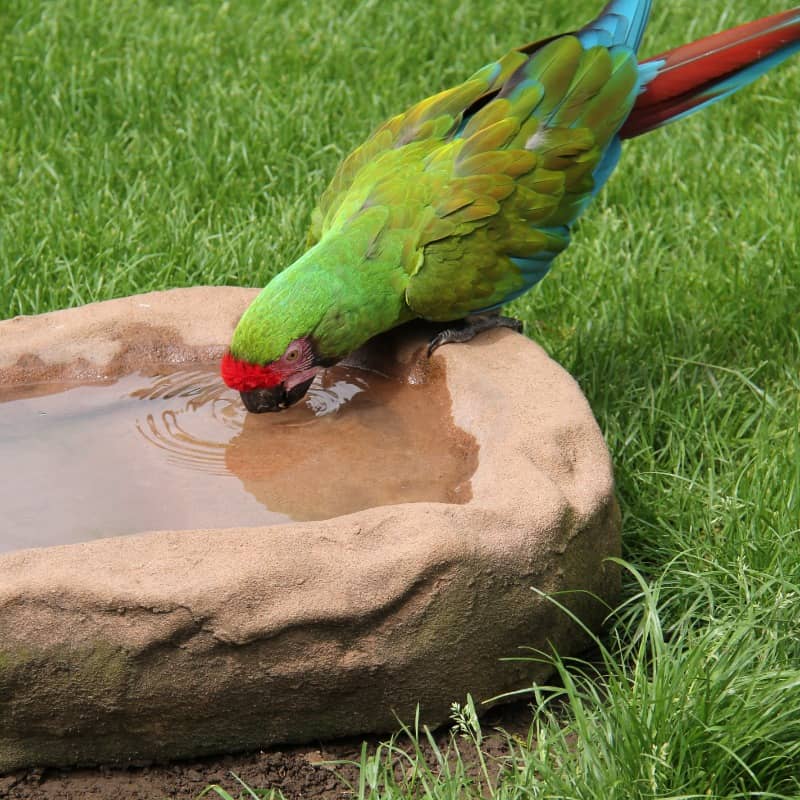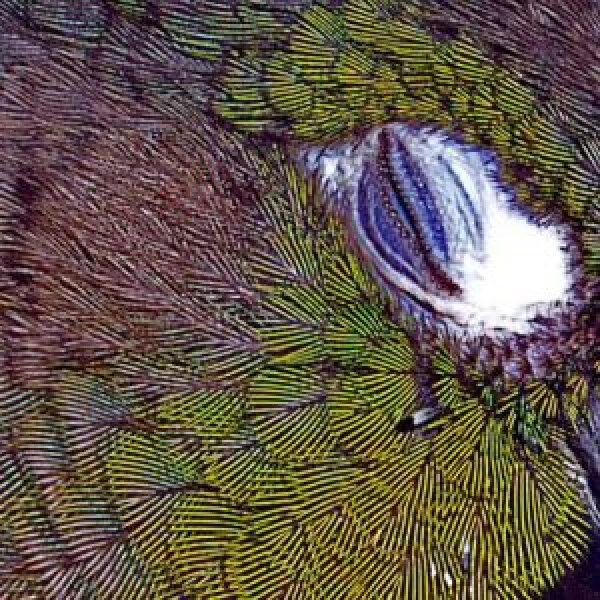
How is Pet Bird Hydration Different Than Pet Mammal Hydration?
Last Updated on by Mitch Rezman
The store shelves overflow with a wide array of hydro flask options, accompanied by a multitude of filtered water pitchers designed to be poured into them.
Consequently, there are no valid reasons for us, as humans, to neglect our obligation to consume a daily portion of fresh, chilled water that matches our personal preferences.
However, when it comes to our avian companions, obtaining sufficient amounts of unpolluted water requires a far more elaborate process.
In contrast to dogs eagerly quenching their thirst from bowls filled to the brim, birds have a tendency to delicately imbibe water in small sips throughout the course of the day.
Their consumption is subtly unobtrusive and often goes unnoticed.
It is crucial not to make the mistake of assuming that everything is satisfactory just because their water bowl seems to be filled.
Do you know how many “dunks” your bird(s) utilize on a regular basis?
Why is this important?
When you see your bird(s) is not taking water in the usual amount of average “dunks,” this could be an indication of illness.
As food particles and waste accumulate in the dishes, the quality deteriorates rapidly.
This is precisely why providing our avian friends with water demands additional vigilance and meticulousness.
Every single day, birds quench their thirst by consuming water.
Birds have their own unique way of drinking water.
Unlike dogs, they don’t gulp it down eagerly as we expect.
You might not always see your feathered friend hydrating from their bowl, but that doesn’t mean they’re not drinking.
Birds have different drinking habits; some are swift and take quick sips, while others are more patient and savor each droplet as if they are truly relishing the experience.
While a parched dog would eagerly gulp down an entire bowl of water in one go, a pet bird will not drain a whole dish of water. The contrast between the volume of water in the dish and the size of the bird is significantly more pronounced.
Regrettably, there are individuals who may misunderstand the significance of a fully filled water container in a bird’s cage, assuming it can be left untouched until the water level visibly decreases.
In contrast to dogs, where empty water bowls require constant refilling throughout the day, keeping pet birds necessitates the disposal of any remaining fresh water at the beginning of each day, replacing it with a fresh batch.
The water in a bird’s habitat can become quickly contaminated.
Excessive duration of water presence within a bird’s enclosure can foster the growth of bacterial organisms.
Numerous avian species indulge in the practice of submerging their nourishment into their water receptacles, leading to an acceleration in bacterial populations as the water progressively becomes blended with food fragments.
Such fragments could originate from remnants of seed husks or even millet particles inadvertently wafted into the water dish.
If your feathered friend frequently indulges in dunking their food or has a habit of soiling their water dish, it becomes imperative to perform several water replacements throughout the day (refer to the section titled Importance of Proper Dish Placement).
Imagine peering inside a sippy cup after a little one with a mouth stuffed with food takes a sip; chances are, you will encounter unsightly particles of partially submerged edibles.
Don’t even think about passing over the identical sippy cup to the child for completion on the following day – the same principle applies to our avian companions.
To ensure that your pet birds’ food and water remain unsoiled, remember the cautionary phrase Beware of below!
Although the position of the food and water cups in your bird’s cage cannot be altered, you have the option to rearrange perches and swings within the enclosure.
By doing so, you can minimize the chances of your bird’s excrement contaminating its feeding dishes.
Your bird can develop a bacterial mouth infection from drinking water with “poop.”
Alternate rewrite: Utilize specialized bowls for attachment or suspension in various sections of the cage as an additional option.
The objective is to deter your bird from perching directly above its food and water supplies. However, it is important to note that even with these measures, it shouldn’t come as a surprise if your bird occasionally ends up defecating in the dishes.
Don’t hesitate to switch your bird’s water dish or food dish if their droppings land in it, even if it’s not the end of the day yet.
Birds have a unique way of quenching their thirst and getting clean – they indulge in sips of water while indulging in their version of bathing or showering. These avian creatures exhibit a fascinating array of bathing preferences that far surpasses our own.
Birds have a unique way of quenching their thirst and getting clean – they indulge in sips of water while indulging in their version of bathing or showering. These avian creatures exhibit a fascinating array of bathing preferences that far surpasses our own.
Certain avian species opt for a delicate spritz acquired via a spray bottle or a refreshing dabble in a shallow receptacle of water provided specifically for their use.
Another preferred option entails exposing themselves to a tender cascade produced by a faucet while indulging in the sensation of movement on a damp leafy fragment of lettuce.
Naturally, numerous birds partake in the activity of bathing within their designated water vessel enclosed within their confinement or atop a recreational structure.
Feathers thrive through regular bathing while observing a bird’s diligent feather grooming post bath or shower can be the epitome of tranquility.
Although bathing is crucial, providing your bird with a dedicated water bowl for drinking purposes should never be overlooked.
Should your bird’s water and food bowls be made of ceramic, stainless steel, or thick plastic, it is highly probable that they can be safely washed in the dishwasher.
To be absolutely sure, it is advisable to consult the manufacturer’s instructions. Alternatively, you can immerse them in warm soapy water and thoroughly clean them with a scrub.
Every day, it is essential to include the task of thoroughly cleaning and scrubbing your feathered companion’s food and water containers.
It is crucial not to succumb to the temptations of taking a shortcut by simply disposing of the old water down the sink and merely refilling it repeatedly.
Written and Approved by the Windy City Parrot Content Team.
Author Profile
Latest entries
 The Traveling BirdJune 26, 2025Can You Name 5 Parrot Species That Are Living Wild in the USA?
The Traveling BirdJune 26, 2025Can You Name 5 Parrot Species That Are Living Wild in the USA? Bird BehaviorJune 26, 2025How is it Parrots Are Problem Solvers Social Animals and Even Use Tools?
Bird BehaviorJune 26, 2025How is it Parrots Are Problem Solvers Social Animals and Even Use Tools? Bird & Parrot AnatomyJune 25, 2025How a Tiny Chemical Modification Makes Parrots Nature’s Living Paintings
Bird & Parrot AnatomyJune 25, 2025How a Tiny Chemical Modification Makes Parrots Nature’s Living Paintings PigeonsJune 20, 2025How Do Parrots Thrive in Cities Outside Their Native Habitats?
PigeonsJune 20, 2025How Do Parrots Thrive in Cities Outside Their Native Habitats?


